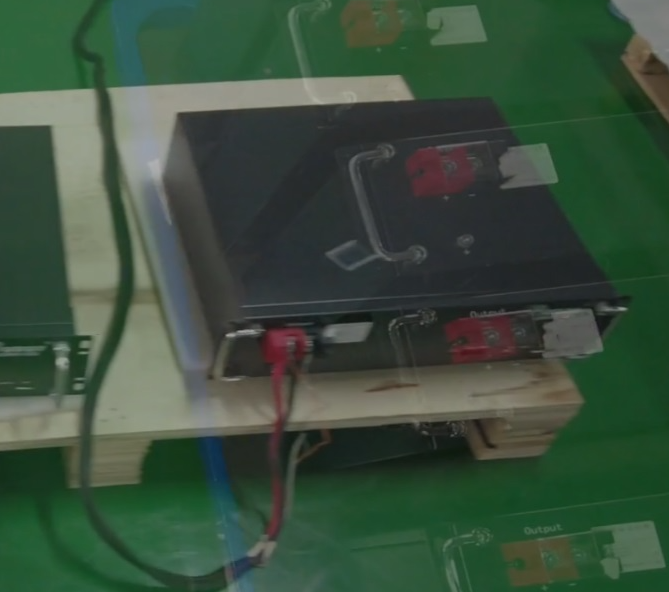Battery charger, as an indispensable electronic device in modern life, provides safe and efficient charging services for all kinds of batteries. With the progress of science and technology and the diversified needs of the market, the types of battery chargers are increasingly rich. Below, we will delve into the various types of battery chargers and their characteristics. From the connection point of view, the battery charger can be divided into wall and desktop. The plug-in charger is usually small and easy to carry, suitable for home or travel use. They can be plugged directly into an electrical outlet to provide a steady charging current to the battery. The desktop charger is usually larger, with multiple charging interfaces, can charge multiple devices at the same time, suitable for office or home and other places to use. Secondly, according to the type of battery charged, battery chargers can be divided into many types. For example, lead-acid battery charger, lithium iron phosphate charger, nickel-cadmium battery charger, nickel-metal hydride battery charger, lithium battery charger and so on. These chargers have different charging curves and charging strategies for different types of batteries to ensure safe and efficient battery charging. For example, lead-acid battery chargers usually use three-stage charging methods, which can improve the service life of the battery; The lithium-ion battery charger has a fast charge function, which can fully charge the battery in a short time.
of course, there are some special type of charger, such as an on-board charger and mobile phone chargers and other electronic equipment. The car charger is designed for the car environment and is able to provide stable charging service for digital products while driving. They usually have multiple protection mechanisms such as over-voltage, over-current, and over-temperature to ensure the safety and reliability of the charging process. Chargers for mobile phones and other electronic devices are more common, and they are usually composed of a stable power supply and the necessary control circuit, which can provide users with a convenient and efficient charging experience. It is worth mentioning that with the continuous development of fast charging technology, more and more chargers have begun to support fast charging functions. Fast charge technology mainly improves the charging efficiency by increasing the voltage or current, so that the battery can be fully charged in a short time. At present, the common fast Charge technologies on the market include Quick Charge, Pump Express and USB PD. These fast charging technologies not only improve the charging speed, but also ensure the safety and stability of the charging process through the intelligent control chip.

type conventional charger is a universal battery charging equipment, it is designed for the vast majority of type and size of the battery. This kind of charger can adapt and output different voltages of the battery, which is easy to operate and cost-effective, and is one of the widely used charging tools.
Intelligent charger has the ability to accurately manage the battery, such as through the preset algorithm or accurate measurement of charging parameters such as current, voltage regulation, in order to achieve more efficient charging effect. It can automatically adjust the charging mode according to the type, capacity and status of the battery, such as fast charge, slow charge or trickle charge.
Fast charger is designed for the charging needs of modern life with fast pace and tight time. It uses high current and high voltage to charge the battery, which can replenish the device faster than ordinary chargers. There is a significant improvement in efficiency.
Universal wireless charger to avoid the user many times to replace the cumbersome cable. It can be compatible with different brands of receiving devices at the same time, and provides a convenient wireless charging method.
Special charger is designed for a specific type or brand of battery. Since this type of charger usually has more professional technology, such as a charging mode that precisely matches the battery model, it can protect the battery safety more efficiently and extend its service life.
This is a set of fast charging and intelligent control in a charger type. This type of charger uses fast charging technology to charge the device and protects the device and battery from high current through internal control technology. In summary, various battery chargers have their own characteristics and application areas, in the selection of battery chargers need to consider their actual needs and use habits, reasonable collocation of different models and types of chargers and equipment is the key to maintain its performance. In practical applications, it is necessary to select the appropriate charger type according to the specific type of battery used and its own needs. If you have more questions or needs for more details about different types of batteries and corresponding chargers, you can refer to the relevant electronic information platform or electronic product manuals for more information.
there are many types of battery chargers, each type has its unique features and applicable scenario. When choosing a charger, we need to choose the right charger according to our actual needs and battery type. At the same time, in order to ensure the safety and efficiency of the charging process, we should also pay attention to the selection of charger brands and products with reliable quality and stable performance. With the continuous progress of science and technology and the constant change of market demand, I believe that there will be more innovative battery chargers in the future, bringing more convenience and surprises to our lives. Some high-end chargers are also equipped with intelligent recognition function, which can automatically identify different brands and models of batteries, and adjust the charging parameters according to the actual situation of the battery to achieve the best charging effect. This intelligent design not only improves the versatility of the charger, but also makes the charging process safer and more reliable.